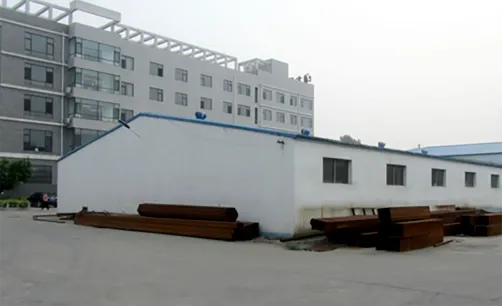Jul . 26, 2024 05:43 Back to list
Constructing a Wire Mesh Rock Retaining Wall for Enhanced Landscape Stability and Support
The Versatility of Wire Basket Rock Retaining Walls
In contemporary landscaping and civil engineering, the use of wire basket rock retaining walls has gained significant attention for their effectiveness and aesthetic appeal. These structures, often referred to as gabion walls, consist of wire cages filled with rocks or other materials. They serve various purposes, from erosion control to decorative landscaping, making them a popular choice in numerous applications.
What Are Wire Basket Rock Retaining Walls?
Wire basket rock retaining walls are composed of sturdy wire mesh containers, typically made of galvanized steel or coated with PVC for enhanced durability. These containers, or gabions, are filled with natural stones such as granite or limestone, which not only provide structural support but also blend seamlessly with the environment. The flexibility of the wire materials allows for adaptation to irregular terrain, providing a versatile option for various landscaping and engineering projects.
Advantages of Wire Basket Rock Retaining Walls
One of the foremost benefits of wire basket rock retaining walls is their ability to manage soil erosion effectively. By providing a stable structure that holds back soil, these walls minimize the risk of landslides and soil degradation, particularly in hilly or unstable areas. The open structure of gabions allows water to flow through, reducing hydrostatic pressure that can lead to wall failure. This drainage capability is crucial in maintaining the integrity of the surrounding landscape.
Moreover, wire basket rock retaining walls are environmentally friendly. The materials used—natural stones and steel—are often sourced locally, minimizing the carbon footprint associated with transportation. Additionally, these walls can blend harmoniously with the natural environment, promoting biodiversity by allowing plants and animals to thrive in and around the structures.
wire basket rock retaining wall

The aesthetic appeal of wire basket rock retaining walls is another significant advantage. They can be designed to fit a variety of styles, from rustic to modern, enabling homeowners and landscape architects to create visually striking features in both residential and commercial settings. The stones can be selected for their color and texture, giving every wall a unique appearance that complements the overall landscape design.
Installation and Maintenance
The installation of wire basket rock retaining walls is relatively straightforward compared to traditional masonry walls. The process typically involves excavating the foundation, setting up the wire baskets, and filling them with stones. This simplicity not only reduces labor costs but also allows for quicker project completion.
In terms of maintenance, these walls are quite durable, requiring minimal upkeep. Over time, the wire mesh may corrode; however, regular inspections can identify any issues early. Additionally, the stones within the gabions can shift or settle but can be easily adjusted or replenished as needed.
Conclusion
Wire basket rock retaining walls offer an effective, aesthetic, and environmentally friendly solution for various landscaping and civil engineering challenges. Their ability to manage soil erosion, promote natural drainage, and integrate into diverse landscapes makes them a valuable choice for both residential and commercial projects. As the demand for sustainable construction practices grows, the popularity of gabion walls will likely continue to rise, providing innovative solutions for modern landscaping needs. Embracing such natural and adaptable designs not only enhances the beauty of our environments but also reinforces the commitment to sustainable development.
-
The Role of Field Wire Fence in Grassland Conservation
NewsJul.15,2025
-
Stainless Steel Razor Wire Durability in Coastal Environments
NewsJul.15,2025
-
Enhancing Home Security with Mesh Fences
NewsJul.15,2025
-
Diamond Mesh Wire for Small Animal Enclosures
NewsJul.15,2025
-
Common Wire Nail Tensile Strength Testing for Woodworking
NewsJul.15,2025
-
Barbed Wire Corrosion Resistance Galvanization Techniques
NewsJul.15,2025









